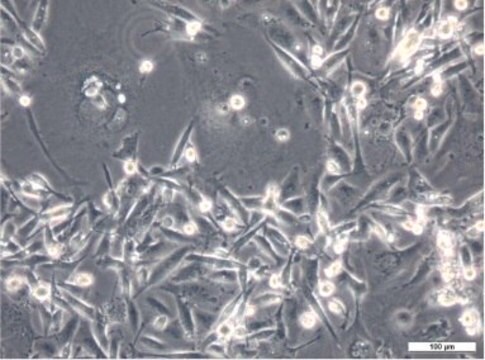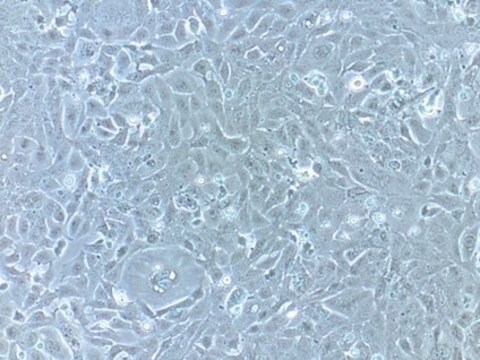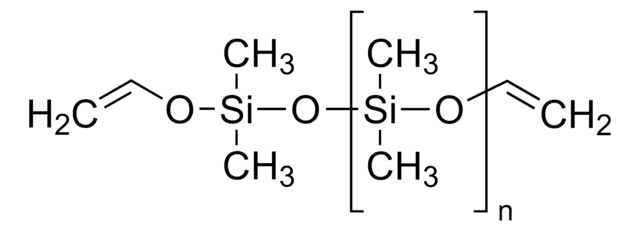Origine de la lignée cellulaire
Human Caucasian breast epithelial
Description de la lignée cellulaire
The cell line HMT-3522 S2, also known as HMT-3522/gt1, is a subline that has been derived from HMT-3522. The parent line was established from a benign breast tumour of a 48 year old woman and has undergone spontaneous malignant transformation. It was grown on collagen in serum-free media without antibiotics from explantation onwards. A mutation at codon 179 of the p53 gene was detected during establishment of the parent line at passage 25–30. The subline S1 is a continuation of this line from passage 34 (Sigma catalog no. 98102210) growing without collagen. Subline S2 has been isolated by culturing S1 cells from passage 118 in serum-free media without epidermal growth factor (EGF). A third subline, T4-2 (Sigma catalog no. 98102212) was established from S2 at passage 238 and is the only tumorigenic line out of the 3 sublines. S2 and T4-2 grow on collagen-coated flasks. HMT-3522 S2 is near-diploid, but an evolution of karyotype has been observed by regular chromosomal analyses. The expression of cytokeratin 13, 14, 17 and 18 and vimentin has been reported. Overexpression of mRNAs for EGF-R, TGF-alpha, TGF-beta and c-erb-B2 compared to subline S1 has been shown. In addition, expression of p53 mRNA has been reported. The cells have been tested positive for EGF receptor but negative for estrogen receptor. Growth is inhibited by addition of EGF. The decreased growth factor requirements developed simultaneously with amplification and overexpression of c-myc protooncogene. Publications using this cell line must refer to the original paper. Any sublines created must include the name “HMT-3522” in the designation, but a short name may be used in the same paper. Further references are available on request.
Profil d'ADN
STR-PCR Data:
Amelogenin: X
CSF1PO: 11,12
D13S317: 11
D16S539: 11,13
D5S818: 9,11
D7S820: 9
THO1: 9,9.3
TPOX: 11
vWA: 14,17
Milieu de culture
DMEM / Ham′s F12 (1:1) + 2 mM Glutamine + 250 ng/ml insulin + 10 μg / ml transferrin +10E-8M Sodium selenite + 10E-10M 17 beta-estradiol + 0.5 μg/ml hydrocortisone + 5 μg / ml ovine prolactin
Procédure de repiquage
If starting from a frozen ampoule the cryoprotectant should be removed. Add thawed cells to a conical based centrifuge tube, e.g., 15 ml tube; slowly add 4 ml of culture medium to the tube. Take a sample of the cell suspension, e.g. 100 ul, to count cells. Centrifuge the cell suspension at low speed, i.e., 100-150 x g for a maximum of 5 minutes.Split subconfluent cultures using 0.25% trypsin or trypsin/EDTA; 5% CO2; 37 °C. Seed pre-coated flasks at 2-4 x 10, 000 cells/cm2. Cells detach slowly; add same volume of trypsin inhibitor as trypsin used, centrifuge and reseed cells in collagen IV coated flasks. Medium is serum-free, therefore trypsin inhibitor is essential. Cells can be slow in spreading out after subculture and may take 2-3 days to attach. Good growth occurs 5-7 days after subculture.
Cells should be frozen in (45% conditioned media: 45% fresh media) with 10% DMSO.
Cells should be frozen in (45% conditioned media: 45% fresh media) with 10% DMSO.
Autres remarques
Additional freight & handling charges may be applicable for Asia-Pacific shipments. Please check with your local Customer Service representative for more information.






